In Photos: Amazing Amazon Animal 'Selfies'
Sneaking a snack
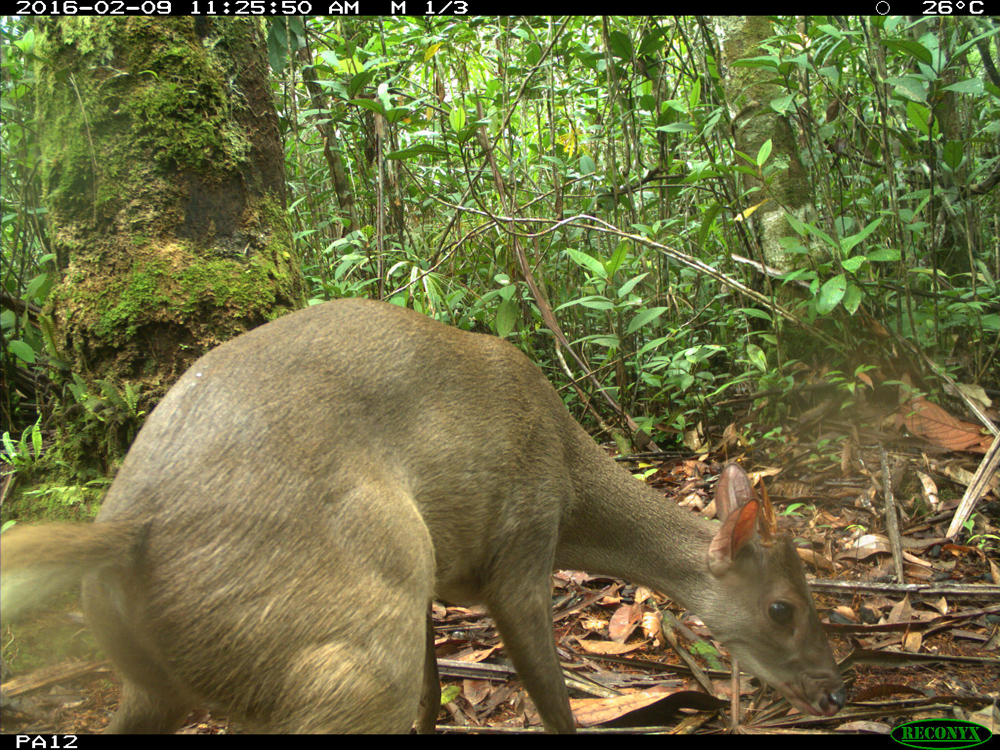
The gray brocket deer (Mazama gouazoubira) is a small forest deer found in the forests of South America. They are smaller than North American deer and only males of this species grow antlers, which are small and spike-like. These mammals are hunted, but tend to be reasonably common within intact forests.
Caught in the act

Although the crab-eating raccoon (Procyon cancrivorus) looks remarkably similar to its North American relative, the animals actually belong to two distinct species. The South American variety has large cheek teeth, which makes it easier for the animal to consume shellfish, though it eats fruit and eggs, as well. This species is also smaller and thinner than northern raccoons, which is likely an adaptation to the heat and increased risk of predation in the Amazon.
Amazon selfie stick

Could this paca be using the first rainforest selfie stick? Pacas (Cuniculus paca) are medium-sized rodents found in tropical forests within the neotropical regions of the Americas. Pacas eat fruit, as well as plants, flowers, fungi, and insects, and play a vital role in seed dispersal within their ecosystem. These animals are also hunted for their highly prized meat. Pacas are plentiful in protected habitats, but their numbers have been reduced due to hunting and habitat destruction.
Going against the grain
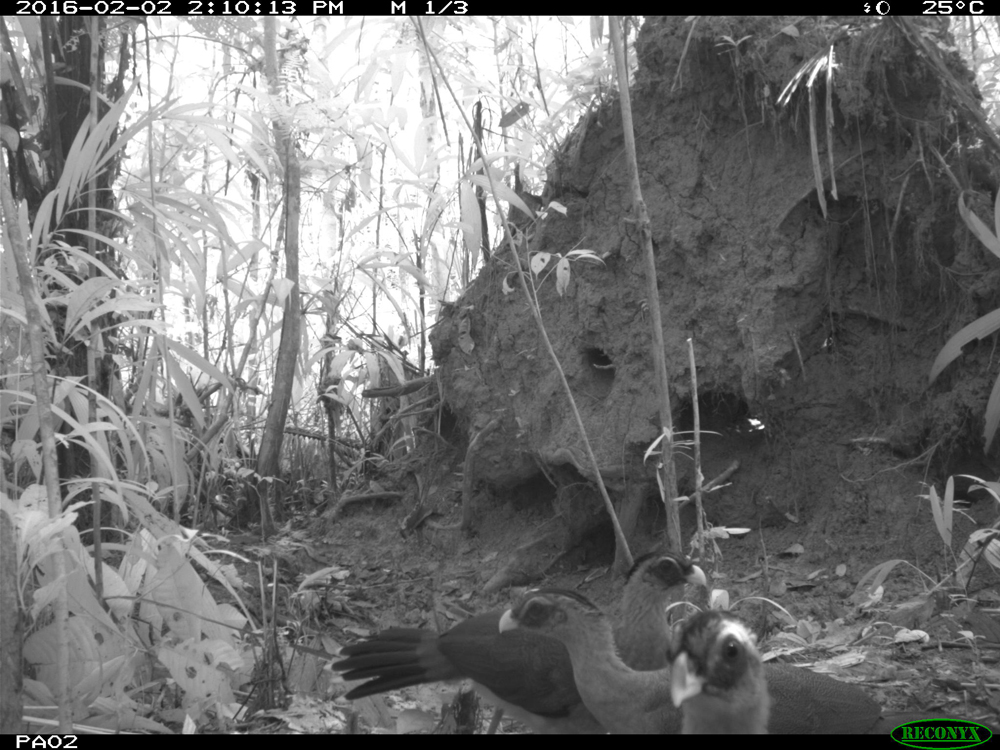
Spotted in broad daylight! Despite its name, the Nocturnal Curassow (Nothocrax urumutum) isn’t a strictly nocturnal bird. Nocturnal Curassows live in northern Amazonia and are often found in pairs or small groups. The Field Museum's Rapid Inventory team shared that these birds are frequently heard in the middle of the night, but are seldom seen. During the day, they are most likely to be found roosting. To hear its bird call, visit xeno-canto.org/species/Nothocrax-urumutum.
Intently tracking
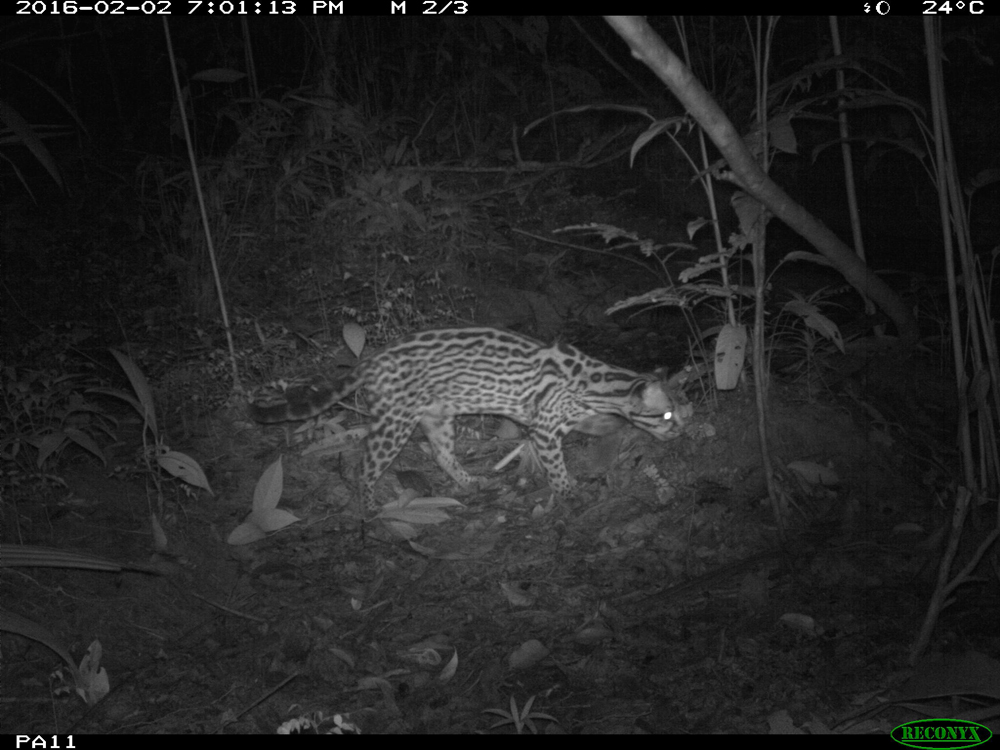
Ocelots (Leopardus pardalis) live under the green canopies of South American rain forests, but can be found as far north as Texas. These cats are twice the size of an average house cat, and are largely nocturnal. The Field Museum's Rapid Inventory team shared that they often see ocelot tracks, but only see the cat rarely. It should also be noted that their beautiful fur has made them a target for hunters, despite protection in most countries where they live.
Posing for posterity
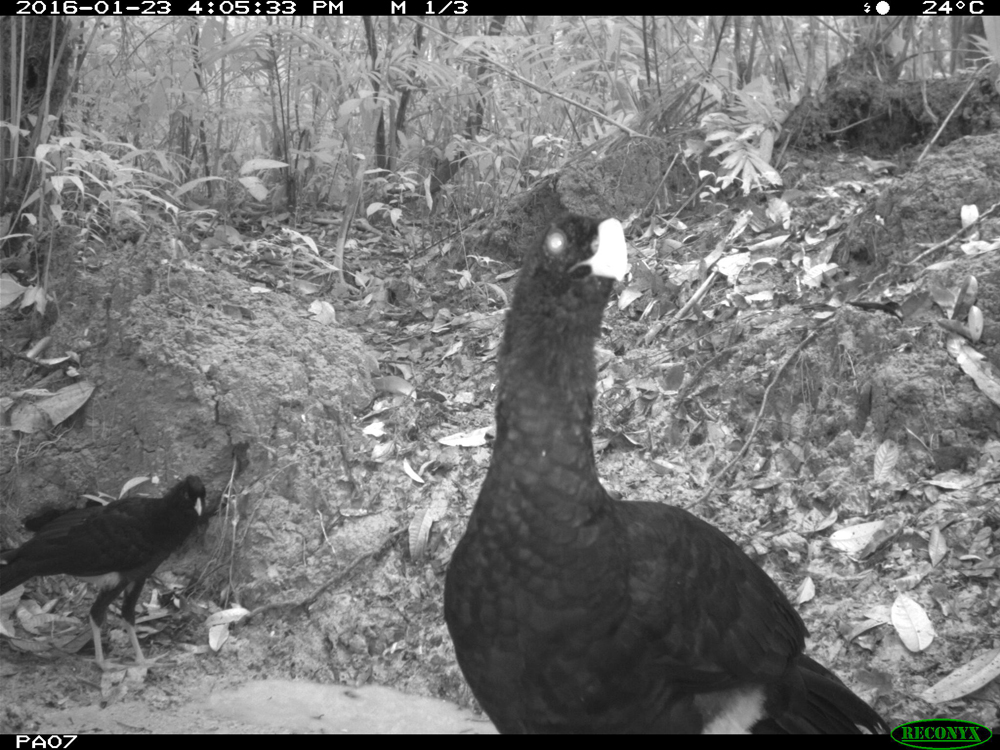
“Just a step a little to the right…perfect!” Despite posing for the camera, the Salvin’s Curassow (Mitu salvini) is rare and can often be heard and not seen. These birds are found in the lowland forest of eastern Ecuador, Peru, and Columbia. The Salvin’s Curassow is slightly bigger than the Nocturnal Curassow and has a bright red bill. In the males (present) it’s bigger and thicker, in females it’s smaller. They are the bird under the most hunting pressure and are only found in very remote areas of the Amazon.
Shy and helpful
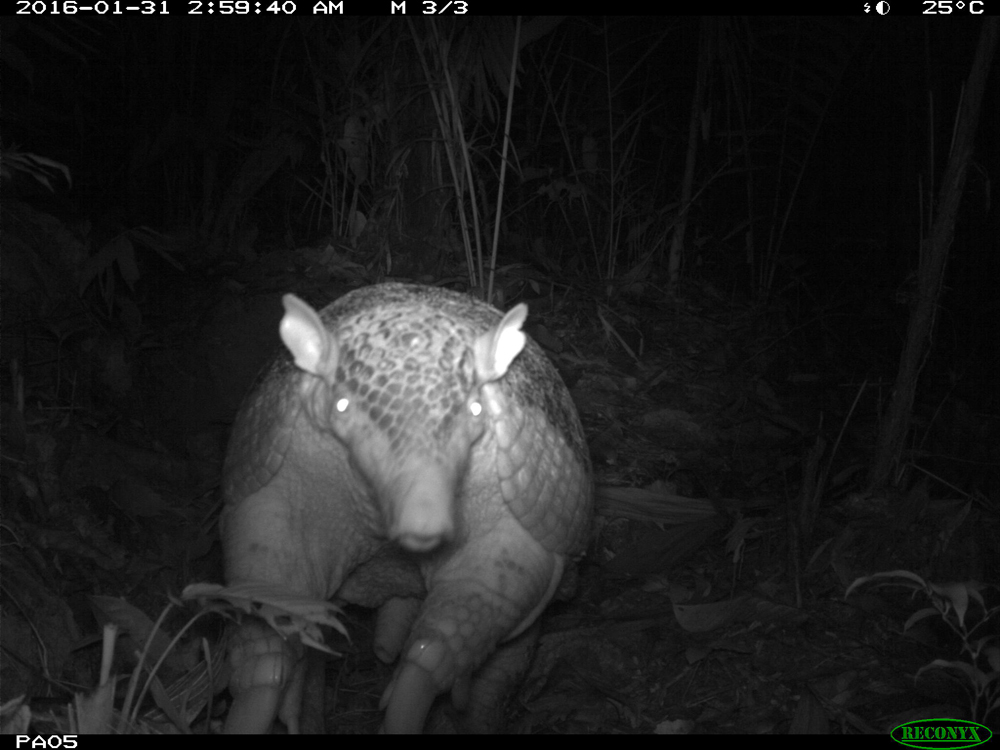
Despite being the size of a large pig, the giant armadillo (Priodontes maximus) actually spends a lot of its time inside large burrows it digs in the ground. In fact, the species is considered a habitat engineer, as its burrows also provide shelter to other birds and mammals in its environment. The giant armadillo uses its claws to dig through the ground looks for its favorite meal—termites. Unfortunately, the pressures of deforestation and hunting often times put the largest animals at risk first, and this species is vulnerable to extinction.
Get the world’s most fascinating discoveries delivered straight to your inbox.
Watch bird?
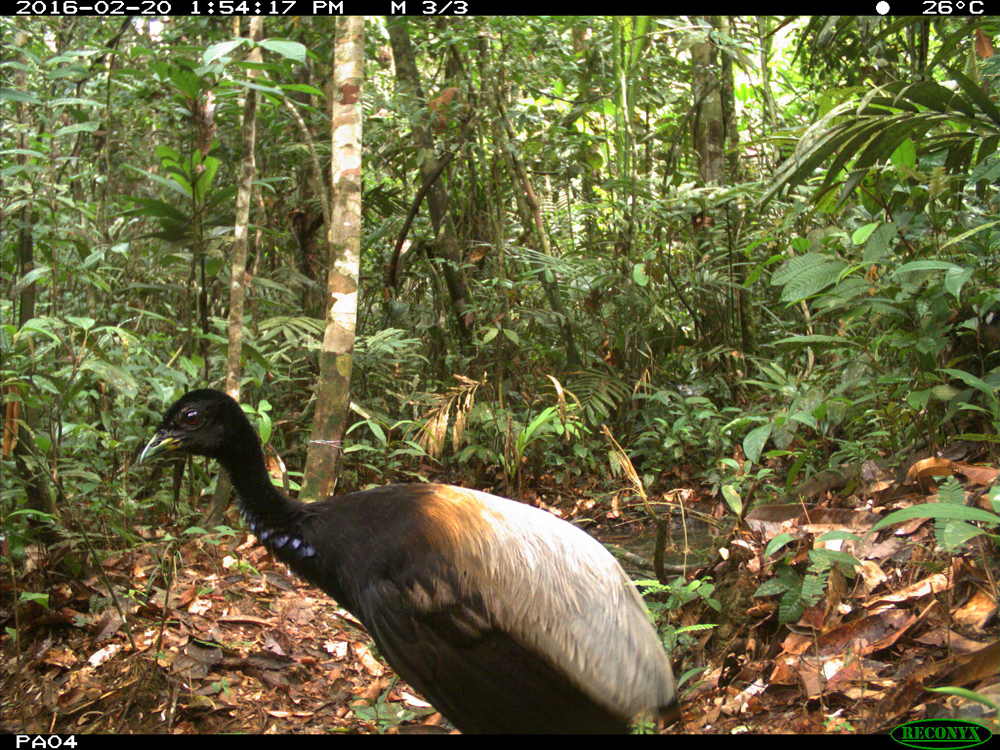
Despite its elegant plumage, the Grey-winged Trumpeter (Psophia crepitans) spends most of its time on the ground in groups of up to 30 animals. When a trumpeter senses a potential threat, it alerts its group by beating its wings together to make a loud sound. In fact, these birds are so good at sensing danger that local people keep them as pets, similar to guard dogs. To hear the Grey-winged Trumpeter’s alarm and mating calls, visit xeno-canto.org/species/Psophia-crepitans.
Super senses

Giant anteaters (Myrmecophaga tridactyla) are edentate animals, which means they have no teeth. They use their strong claws to rip open termite nests and anthills and lap up insects with long tongues. It may not be a surprise that the anteater got a little too close to the camera due to its poor eyesight. These creatures find their food sources through smell, rather than sight. They prefer the larvae, which have high nutritional value.
Sneaky and secretive
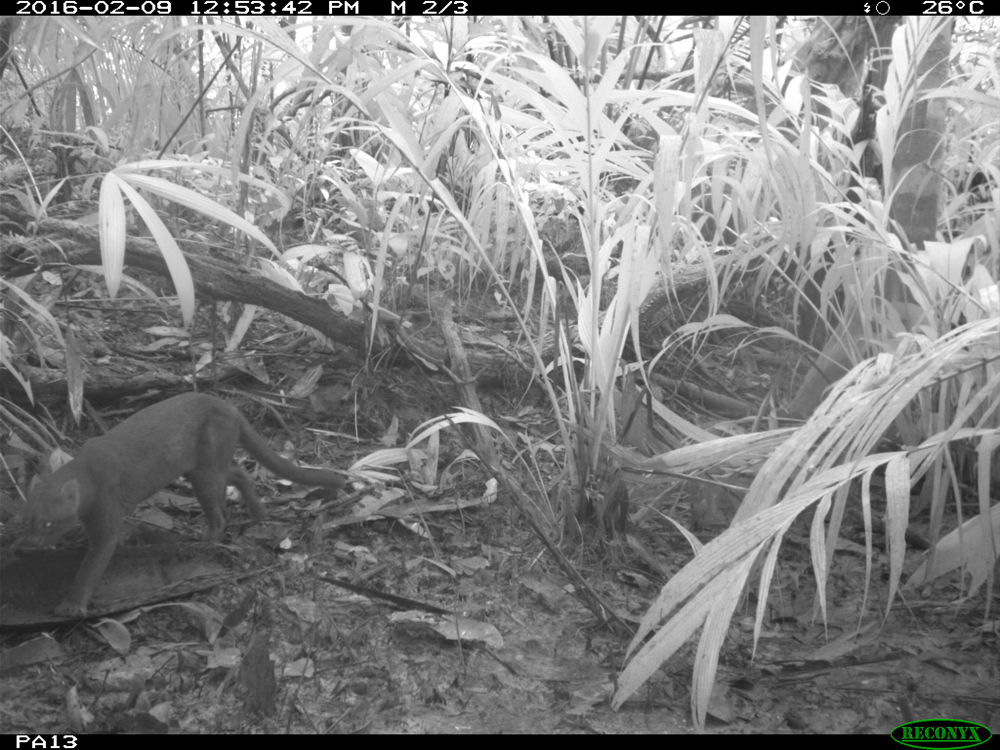
Jaguarundis (Puma yagouaroundi) are stealthy hunters and not frequently seen in the wild. But their tracks inform scientists that they are relatively common in well-preserved forests. Although smaller than the ocelot, this species is larger than a house cat. Historically, the jaguarundi was found in the southern Texas, but can now only be found north as far as Mexico.
Odd and endangered

With an average weight of about 500 pounds, the South American tapir (Tapirus terrestris) is the largest land mammal in the Amazon. Related to horses and elephants, these odd-toed creatures live on a diet that consists mainly of fruit, leaves, and plant fiber. Unfortunately, tapir numbers are declining due to habitat loss, illegal hunting, and competition with livestock, and this species has a high risk of endangerment in the wild.



